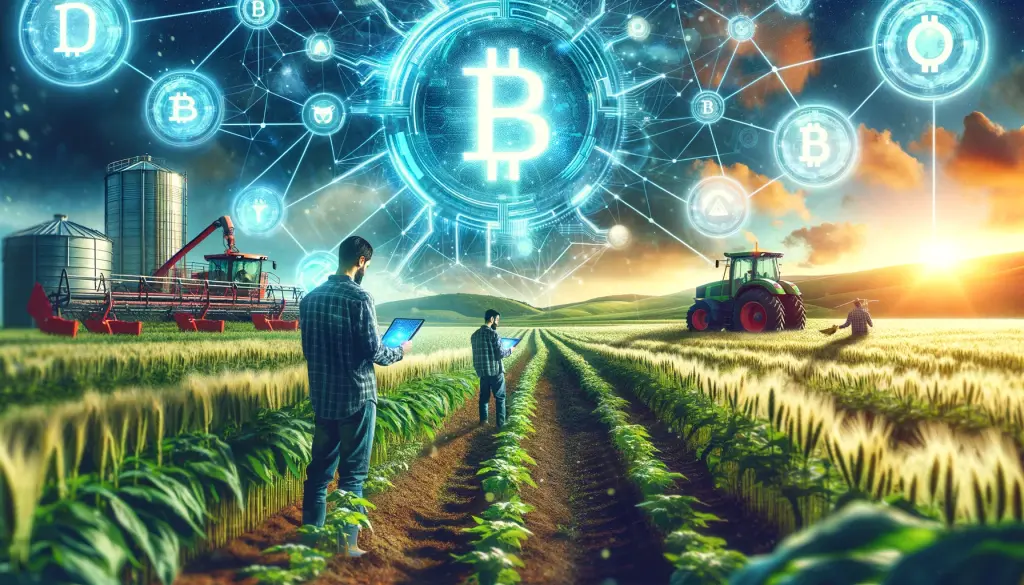The agricultural sector stands on the cusp of a technological revolution, with blockchain technology at the forefront of this transformation. Known for its success in the finance world, particularly with cryptocurrencies, blockchain is now making significant inroads into agriculture, promising a future where farming is more efficient, transparent, and sustainable. This innovative technology offers a new way to record, track, and secure all types of transactions, from planting to the consumer’s plate, fundamentally changing how we view the journey of agricultural products.
Blockchain’s introduction to agriculture addresses critical issues like supply chain inefficiencies, food safety concerns, and the persistent challenge of establishing trust between consumers and food producers. By creating a permanent, unchangeable record of every transaction, blockchain provides a level of transparency and accountability previously unattainable in the agricultural sector. This not only helps in tracking the provenance of food products but also ensures the integrity of the data, building a trustful relationship between farmers, retailers, and consumers.
In this digital age, where consumers are increasingly concerned about the origins and safety of their food, blockchain in agriculture represents a paradigm shift. It’s not just about technology; it’s about reshaping the very fabric of agricultural commerce, ensuring that every stakeholder in the supply chain can make informed decisions based on reliable and verifiable information. As we delve into the intricacies of this topic, we will uncover how blockchain is set to revolutionize farming practices, leading to a more transparent, efficient, and sustainable agricultural ecosystem.
Understanding Blockchain Technology
Blockchain is a distributed ledger technology (DLT) that maintains a secure, transparent, and tamper-proof record of transactions across a network of computers. It consists of blocks of data, where each block contains a list of transactions. These blocks are linked together in a chain, using cryptographic principles, ensuring the security and integrity of the data.
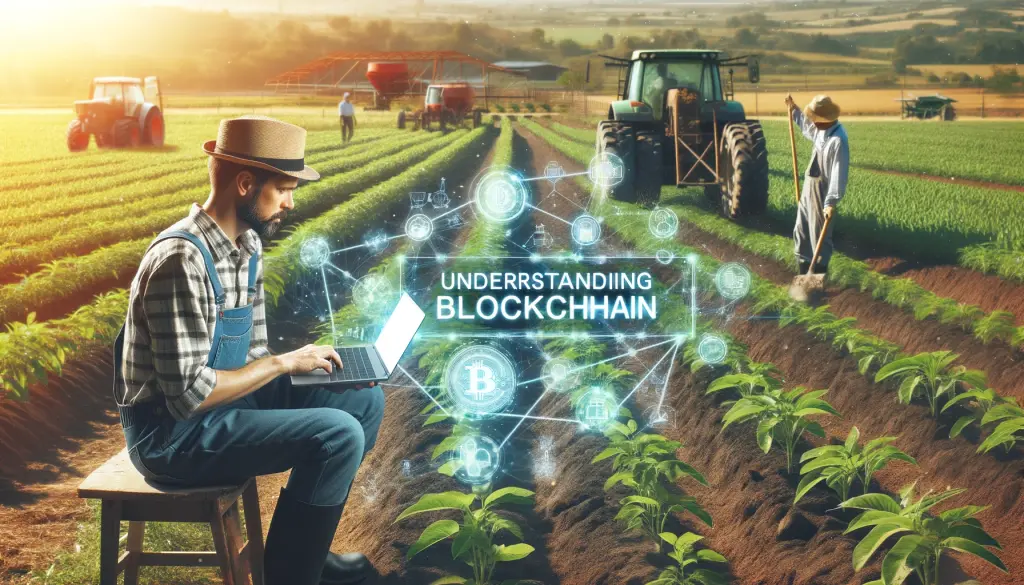
Fundamental Principles of Blockchain
- Decentralization: Unlike traditional record-keeping systems, blockchain operates on a decentralized network of computers (nodes), each having a copy of the entire ledger. This means there is no single point of control or failure, enhancing the system’s resilience against attacks or corruption.
- Transparency: While personal information is kept private, the transaction data on the blockchain are visible to all participants, fostering transparency and trust among stakeholders.
- Immutability: Once a transaction is recorded on the blockchain, it cannot be altered or deleted. This immutable nature of the blockchain ensures the permanence and accuracy of the historical record.
- Consensus: Transactions are validated by consensus among participants in the network, using various algorithmic methods. This process ensures that only legitimate transactions are recorded on the blockchain.
Blockchain in Agriculture
In the agricultural sector, blockchain can be used to create a transparent and unchangeable record of the journey of agricultural products from farm to table. Here’s how it works:
- Traceability: Blockchain can track the journey of agricultural products through the supply chain, recording every transaction and movement. For example, when a crop is harvested, this event is recorded on the blockchain, along with subsequent steps like processing, transportation, and sale.
- Smart Contracts: These are self-executing contracts with the terms of the agreement directly written into code. In agriculture, smart contracts can automate payments and ensure compliance with agreements, such as delivering products at a specified quality and time.
- Data Integrity: Blockchain ensures the integrity of data related to farming practices, production, and supply chain logistics. This information is crucial for certifying the authenticity of organic or sustainably farmed products, enhancing consumer trust.
- Financial Transactions: Blockchain facilitates secure and transparent financial transactions between farmers, suppliers, and consumers, reducing the need for intermediaries and potentially lowering transaction costs.
The Current State of Agriculture and its Challenges
The agricultural sector is a cornerstone of the global economy, feeding billions and providing livelihoods to a large portion of the world’s population. However, it is a sector fraught with complexities and challenges that affect the entire supply chain, from farm to table.
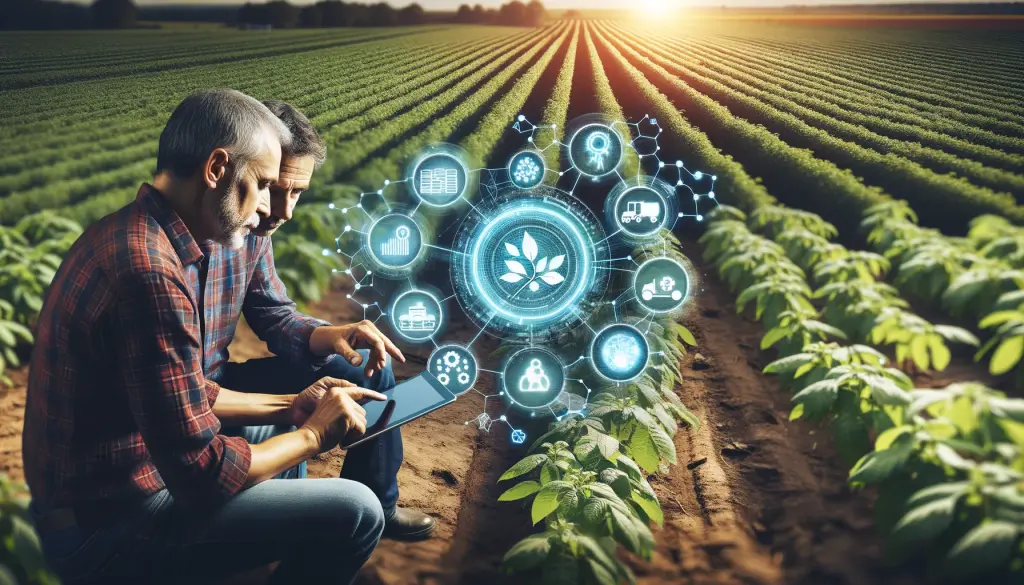
Agricultural Supply Chain Complexities
The agricultural supply chain encompasses a series of steps including production, processing, distribution, and consumption. This chain is complex due to the numerous stages and stakeholders involved, including farmers, transporters, processors, distributors, retailers, and consumers. Each step in the supply chain can introduce variability and uncertainty due to factors such as weather conditions, market demand, and transportation issues. Additionally, the global nature of the supply chain means that products often cross multiple international borders, subject to various regulatory and compliance requirements, further complicating the process.
Challenges Facing the Agriculture Sector
- Supply Chain Inefficiencies: The agricultural supply chain is often characterized by inefficiencies, including lack of transparency, mismanagement of resources, and logistical difficulties. These inefficiencies can lead to increased costs, waste, and delays, impacting the overall productivity and profitability of the sector.
- Food Safety and Quality Concerns: Ensuring the safety and quality of food products is a significant challenge. Contamination, adulteration, and improper handling can pose serious health risks to consumers, leading to recalls and loss of consumer trust. The need for robust mechanisms to trace and verify the origin and handling of food products is more critical than ever.
- Sustainability Issues: The environmental impact of agriculture is a growing concern, with issues like deforestation, water scarcity, and pollution coming to the forefront. There is an urgent need to adopt sustainable farming practices that minimize environmental impact, reduce resource consumption, and maintain biodiversity.
- Economic Pressures: Farmers often face economic challenges, including fluctuating market prices, high operational costs, and limited access to capital. These factors can make it difficult to invest in new technologies or practices that could improve efficiency and sustainability.
Applications of Blockchain in Agriculture
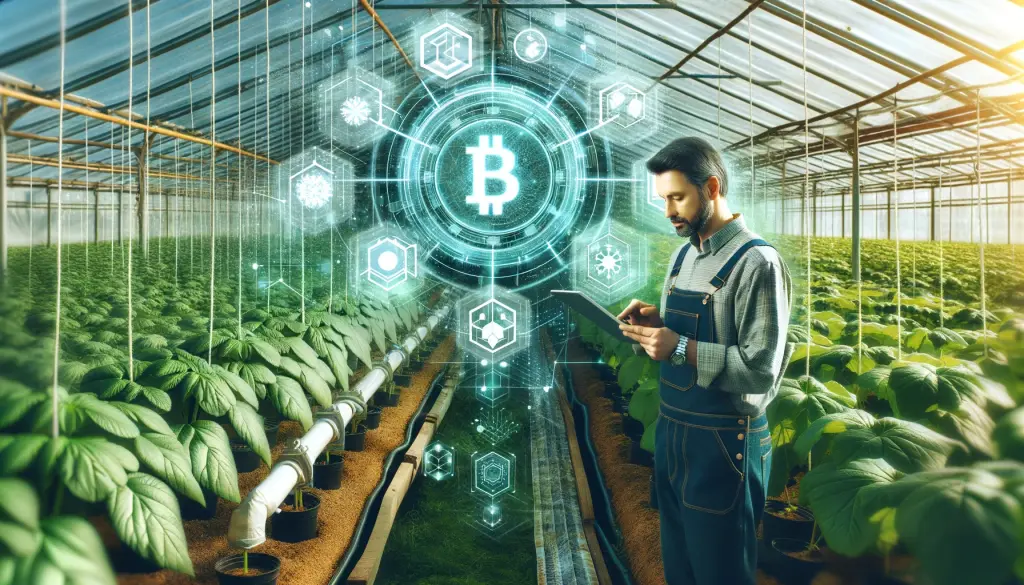
Blockchain technology holds the promise of revolutionizing the agricultural sector by enhancing traceability, increasing efficiency, and ensuring transparency. Here are some of the key applications of blockchain in agriculture:
Traceability and Provenance Tracking
- Farm to Table: Blockchain can document every step of a food product’s journey, from the farm where it was produced to the consumer’s table. This traceability ensures that consumers and stakeholders can verify the origin and journey of the product, enhancing trust and accountability.
- Quality Assurance: By tracking the conditions and handling of agricultural products throughout the supply chain, blockchain can help ensure that quality standards are met. This is particularly important for products that require controlled environments, like fresh produce or organic goods.
- Recall Efficiency: In case of a food safety issue, blockchain can quickly trace the affected products to their source, enabling a swift and accurate recall process. This minimizes the health risk to consumers and the economic impact on stakeholders.
Smart Contracts
- Automated Transactions: Smart contracts on the blockchain can automate transactions based on predefined conditions. For example, a payment to a farmer could be automatically triggered when their produce is delivered and verified at a processing facility.
- Compliance and Quality Control: Smart contracts can enforce compliance with agreed standards and certifications. If a product fails to meet the specified criteria at any point in the supply chain, stakeholders can be immediately alerted, and necessary actions can be taken.
- Reduced Paperwork and Disputes: By automating transactions and record-keeping, smart contracts reduce the need for manual paperwork and minimize disputes related to contract interpretation or execution.
Financial Transactions
- Secure Payments: Blockchain enables secure and transparent financial transactions between parties, reducing the risk of fraud and corruption. This is especially beneficial in international trade, where financial transactions can be complex and subject to various regulations.
- Access to Credit: Blockchain can provide small-scale farmers with a verifiable transaction history, which can be used to access credit and financial services. This financial inclusion is crucial for enabling investment in better equipment, seeds, or sustainable practices.
- Cost Reduction: By streamlining transaction processes and reducing the need for intermediaries, blockchain can lower transaction costs, benefiting all stakeholders in the agricultural supply chain.
Benefits of Blockchain for Farmers and Consumers
The adoption of blockchain technology in agriculture brings numerous benefits to various stakeholders, especially farmers and consumers. These benefits not only enhance the efficiency and transparency of the agricultural supply chain but also contribute to the overall trust and safety of the food system.
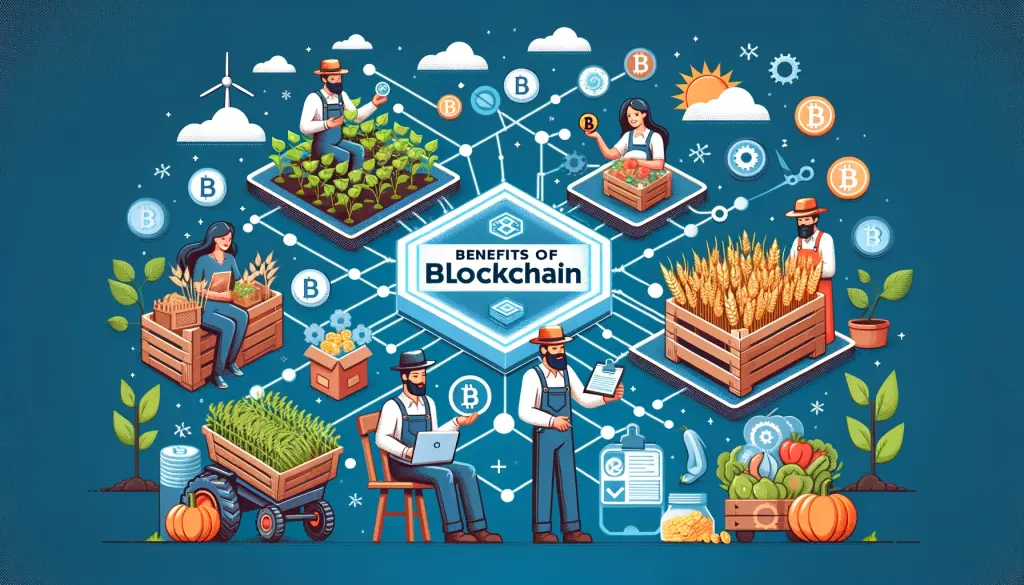
Increased Transparency and Trust
- For Farmers: Blockchain provides a transparent record of agricultural processes, from planting to sale. This visibility allows farmers to prove the quality and origin of their produce, helping to build trust with buyers and potentially enabling them to command higher prices.
- For Consumers: With blockchain, consumers can access detailed information about the products they purchase, including where and how they were grown, processed, and transported. This level of transparency fosters trust in the food system, as consumers are more informed about the safety and quality of their food.
Reduction in Food Fraud and Improvement in Food Safety
- Combatting Food Fraud: Blockchain’s immutable record-keeping capabilities make it extremely difficult for fraudulent activities to occur. By securely tracking each step of the supply chain, blockchain technology minimizes the chances of food fraud, such as mislabeling or selling non-organic products as organic.
- Enhancing Food Safety: Blockchain can quickly trace the source of contamination in the event of a food safety incident. This rapid traceability can lead to quicker responses, potentially saving lives and reducing the economic impact of recalls. It ensures that unsafe products are removed from the market promptly, safeguarding public health.
Enhanced Supply Chain Efficiency and Reduced Costs
- Streamlining Operations: By automating and accurately recording transactions at every stage of the supply chain, blockchain can streamline agricultural operations, reduce paperwork, and eliminate errors caused by manual processes.
- Cost Reduction: Blockchain can reduce costs by optimizing supply chain logistics, reducing the need for intermediaries, and minimizing the losses from counterfeit products and food waste. For farmers, this means a better return on investment; for consumers, it can lead to lower prices and higher-quality products.
Challenges and Considerations
While blockchain technology offers promising solutions for the agricultural sector, its implementation comes with several challenges and considerations that must be addressed to realize its full potential.

Technical and Infrastructural Challenges
- Complexity of Integration: Integrating blockchain with existing agricultural systems and processes can be complex and technically challenging. Many farming operations may not have the digital infrastructure required to support blockchain technology, necessitating significant upgrades.
- Scalability Issues: Blockchain networks, especially those handling extensive data from large-scale agricultural operations, must be scalable to process transactions efficiently. There can be challenges in scaling blockchain solutions to meet the vast and varied needs of the agricultural sector.
- Interoperability: For blockchain to be effective, it needs to be interoperable with various systems and technologies used in agriculture, from IoT devices to data management systems. Ensuring these systems can work seamlessly with blockchain platforms is a significant technical hurdle.
Economic and Educational Barriers
- High Initial Costs: The initial investment required for implementing blockchain technology can be a barrier, especially for small-scale farmers and businesses in the agricultural sector. This includes costs related to hardware, software, and training personnel to manage and operate blockchain systems.
- Lack of Awareness and Understanding: There is a general lack of understanding of blockchain technology and its benefits in the agricultural sector. Many stakeholders may be hesitant to adopt new technologies due to uncertainty about their operational and economic impact.
- Need for Education and Training: For blockchain to be effectively implemented in agriculture, stakeholders need to be educated and trained not only in the technology itself but also in how it can be applied to their specific context. Building this capacity is crucial for the successful adoption and utilization of blockchain in agriculture.
Overcoming these challenges requires collaborative efforts among technology providers, agricultural businesses, governments, and educational institutions. Investments in infrastructure, education, and awareness campaigns are essential to facilitate the adoption of blockchain in agriculture. Additionally, developing user-friendly blockchain solutions that are easily integrated into existing agricultural practices can help mitigate some of the technical and infrastructural barriers.
Future Outlook and Potential
The integration of blockchain technology into agriculture is more than a fleeting trend; it’s a movement that is poised to reshape the future of farming and food systems. As we look ahead, the potential for blockchain to drive innovation and sustainability in agriculture is immense, with several emerging trends indicating the direction of this transformative journey.
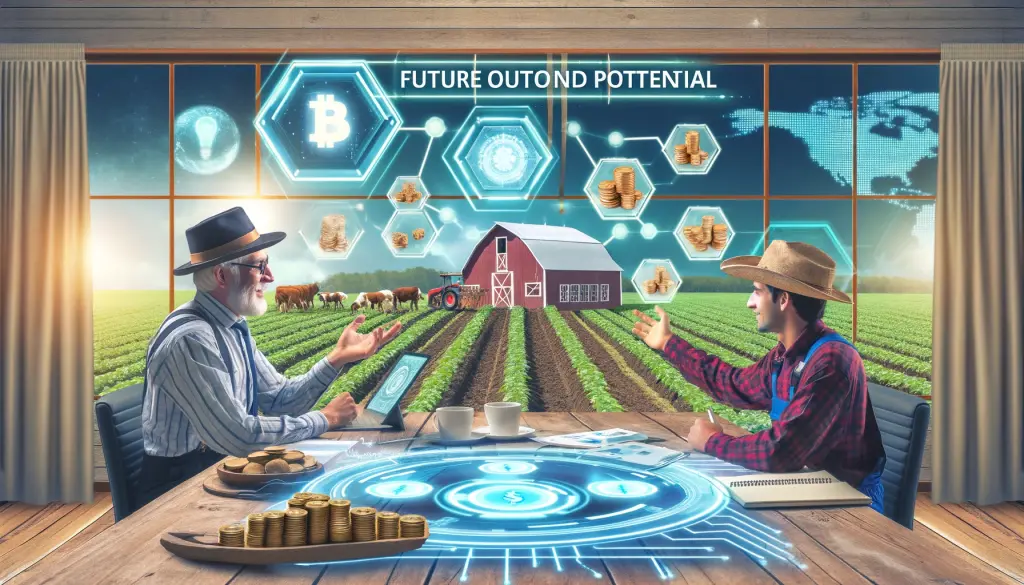
Emerging Trends in Blockchain and Agriculture
- Tokenization of Agricultural Assets: Blockchain can facilitate the tokenization of agricultural assets, such as crops or livestock, allowing for easier trading and investment in the agricultural sector. This can provide farmers with new financing opportunities and investors with a novel way to engage with the agriculture market.
- Enhanced Supply Chain Resilience: With the increased transparency and efficiency provided by blockchain, agricultural supply chains can become more resilient to disruptions, such as those caused by climate change or global health crises. This resilience is crucial for ensuring food security in an increasingly uncertain world.
- Precision Agriculture: Combining blockchain with other technologies like IoT, AI, and big data can lead to the development of precision agriculture practices. These practices enable more efficient use of resources, better crop management, and reduced environmental impact, all recorded transparently on a blockchain.
Blockchain’s Role in Sustainable Agricultural Practices
Blockchain technology can be a significant driver of sustainable agriculture by:
- Encouraging Responsible Farming: Blockchain’s traceability features can promote responsible farming practices by providing consumers and businesses with verifiable information about the sustainability credentials of agricultural products.
- Reducing Waste: Through more efficient supply chain management, blockchain can help reduce food waste by ensuring products are delivered and consumed before spoilage, optimizing the distribution process.
- Supporting Local Economies: By streamlining transactions and reducing intermediaries, blockchain can help keep more value within local economies, supporting small-scale farmers and communities.
Conclusion
In conclusion, blockchain technology holds transformative potential for the agricultural sector, offering a future where supply chains are more transparent, efficient, and trustworthy. As we have explored, blockchain can significantly improve traceability, reduce food fraud, enhance food safety, and streamline supply chain processes, benefiting both farmers and consumers.
The future of agriculture with blockchain looks promising, with emerging trends indicating a shift towards more technologically integrated and sustainable practices. As blockchain technology continues to evolve, its application in agriculture is expected to expand, driving innovation and efficiency across the sector. This integration is not without its challenges, including technical, economic, and educational hurdles, but with concerted efforts and strategic investments, these obstacles can be overcome.
The role of blockchain in promoting sustainable agricultural practices is particularly noteworthy. By providing transparent and immutable records of agricultural processes, blockchain can help enforce sustainable practices, verify the authenticity of organic and sustainably produced products, and facilitate responsible resource management.
Looking ahead, the continued adoption of blockchain in agriculture will likely be driven by advancements in technology, increased stakeholder collaboration, and supportive policies that foster innovation and sustainability. As the sector embraces these changes, the promise of a more sustainable, efficient, and transparent agricultural system becomes increasingly attainable.
In essence, blockchain in agriculture represents a confluence of tradition and innovation, where age-old farming practices meet cutting-edge technology. This synergy, if nurtured and developed responsibly, can lead to a future where agriculture not only feeds the world but does so in a way that is sustainable, equitable, and resilient.

